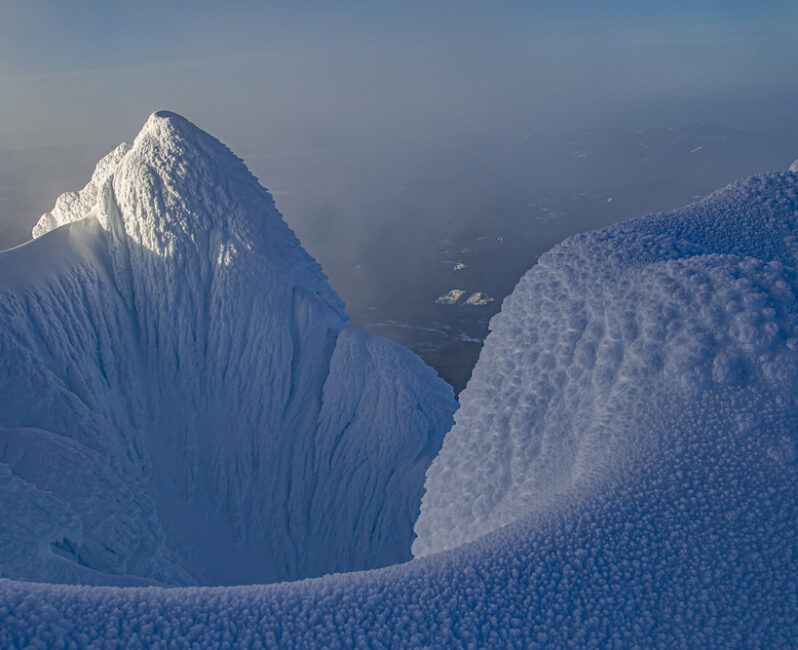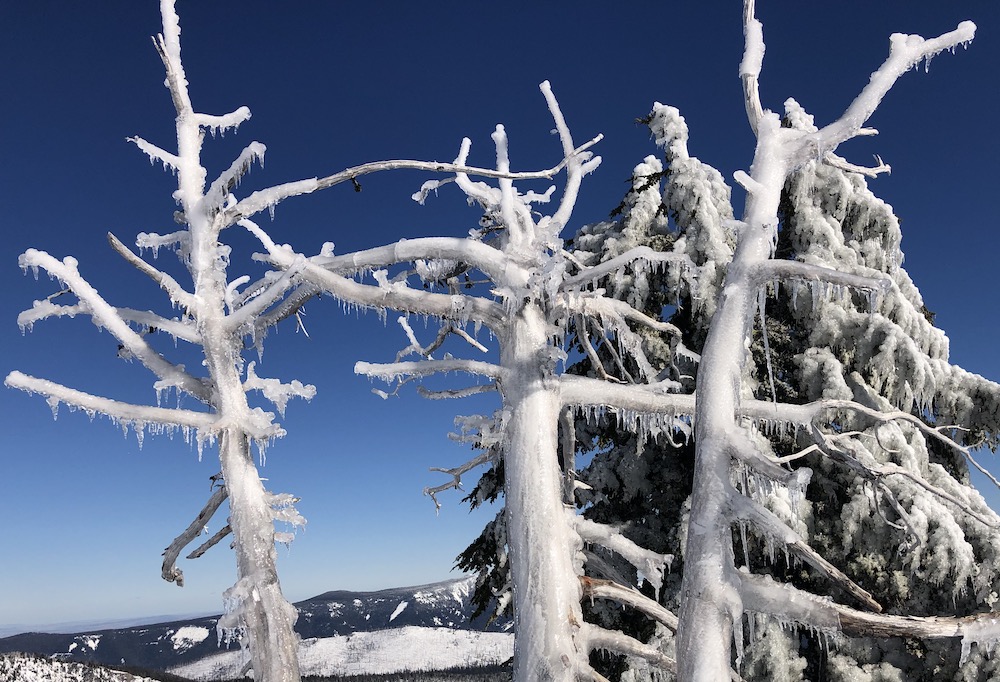Mount Hood made news in spring of 2016 when scientists reported 77 minor earthquakes swarming the mountain over 24 hours.
Geologists quickly reassured the public that the tremors did not indicate a volcanic eruption was on the way, but still, the discovery did serve as a reminder that Mount Hood is an active volcano. The mountain could wreak some serious havoc if it blew its top.
Here are eight relevant facts and hypotheses from the U.S. Geological Survey about the active volcano we call Mount Hood:
- It’s blown before, and it will blow again. Mount Hood has erupted episodically for about 500,000 years. The geologic record shows two major eruptive periods in the past 1,500 years, the most recent ending with some minor activity around 1865. As for future eruptions, the US Geological Survey lists Mount Hood’s threat potential as “high.”
- We’ll probably get a warning. Volcanic eruptions have a much longer warning phase than do other natural hazards. That means they are easier to predict than floods, hurricanes, earthquakes and wildfires. Scientists at U.S, Volcano Observatories perform real-time monitoring of volcanoes such as Mount Hood, collecting data about the movement and pressure of magma inside the volcano and shifts in seismicity. That helps them to forecast the style and timing of upcoming eruptions. Scientists also assemble longer-term hazard assessments based on the volcano’s geologic past and baseline data compared to periods of unrest.
- When it blows, it will be powerful and fast. Plumes of rock could shoot up thousands of feet above the volcano, and a chaotic mixture of rock fragments, gas, and ash would come blasting out from volcanic vents at tens of meters per second.
- The sudden heat will trigger a major meltdown. Both recent eruptions on Hood melted huge amounts of ice and resulted in major lahars, which are a muddy mixture of water and debris moving rapidly downstream in a powerful mudslide. The mountain’s glaciers contain about 300 million cubic meters of ice, enough to wreak serious havoc if rapidly melted into rushing waters.
- It will probably blast toward the Sandy, not Hood River. As the USGS website explains, “About 1,500 years ago, a debris avalanche originating on the upper southwest flank of Mount Hood produced a lahar that flowed down the Zigzag and Sandy River valleys. It swept over the entire valley floor in the Zigzag-Wemme-Wildwood area and inundated a broad area near Troutdale, where the Sandy flows into the Columbia River —a total distance of about 90 km (55 mi). The debris avalanche created the breached summit crater that has since caused most eruptive products to flow into the Sandy River basin while the Hood River basin remains sheltered.”
- Ash would probably create additional problems. Ash clouds could reach altitudes that would impact aviation; even minor ash can cause jet engines to stall. Fortunately for the people of Portland, the prevailing winds rarely blow from the mountain to the city, but those of you who remember the eruption of Mt. St. Helens no doubt remember the ash.
- The risk could last for a while. We think of volcanoes erupting in one cataclysmic event, but the unrest can continue for months and even years, creating a greater long-term hazard than floods, hurricanes, earthquakes and other natural disasters.
- Thousands of people could be displaced, and the bill would likely be in the billions. When you consider the residential, recreational, transportation and electrical infrastructure around the mountain, there’s no way an eruption on Hood is going to be a minor event. The best we can hope for is that geologists will identify the threat early and give people ample warning to evacuate the danger zone – and people are wise enough to listen to reason. As the USGS scientists point out, the location and size of the affected area will depend on the location of the erupting vent or landslide, the volume of material involved, the snow and ice conditions around and down slope from the vent, and the power, strength and character of the eruption.
Last modified: February 26, 2025



